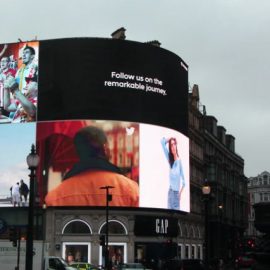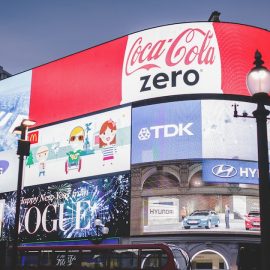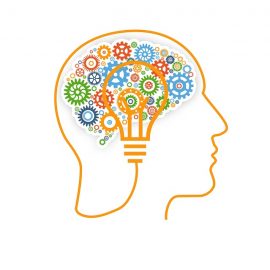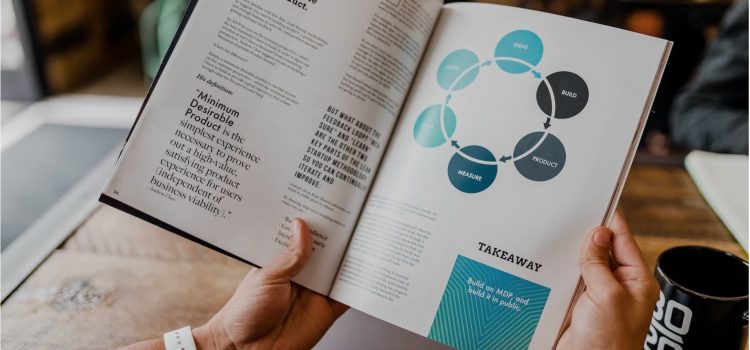
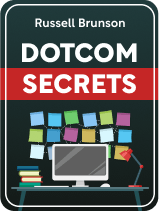
This article is an excerpt from the Shortform book guide to "Dotcom Secrets" by Russell Brunson. Shortform has the world's best summaries and analyses of books you should be reading.
Like this article? Sign up for a free trial here.
How do you create a website conversion funnel? How should you design your funnel to maximize conversions?
According to Russel Brunson, the author of Dotcom Secrets, a website funnel consists of four key stages: the purchase page, the add-on button, the add-on page, and the thanks page. Brunson describes many specific variations of the sales funnel, but they all more or less follow this same basic structure.
Let’s take a look at each stage in more detail.
Stage #1: Purchase Page
Typically, the first page of the website conversion funnel is aimed at persuading the customer to buy your product and providing the order form for purchasing it, according to Brunson. Catch the audience’s attention and illustrate your product’s value with a story; then, call them to action by telling them to fill out an order form on this page.
If your product is free or very cheap, make the order form visible immediately—you don’t need to work hard to convince the audience to make such a low commitment. If your product is a bit more expensive, Brunson suggests providing more stories that illustrate value and force the reader to scroll down before revealing the order form.
(Shortform note: Arguably, Brunson leaves out an important component of the purchase page that can vastly increase the number of sales you make—a Frequently Asked Questions (FAQ) section. By researching your customers’ most common objections and directly addressing them in your website’s sales copy, you can resolve the doubts that would otherwise turn customers away from making a purchase. You can include a FAQ no matter where the order form is on your purchase page—it works equally well below the order form for a cheap product or in the midst of sales copy for a more expensive product.)
Stage #2: Add-On Button
The second stage of your standard sales funnel, the add-on button, is located on your purchase page. After a customer has filled in their payment information, insert a checkbox offering to add a related product to their order for an additional fee (Brunson calls this the “order form bump”). For example, when you’re buying concert tickets, you often have the option to tick a box and pay an additional fee for insurance in case an emergency causes you to miss the concert.
Add-ons like this are the main reason that sales funnels are so profitable, explains Brunson. Once someone has already committed to buying something on your website, they’ll often impulsively spend more if you give them the opportunity. This is profitable because it allows you to generate sales without spending any more on marketing, as we established earlier.
(Shortform note: Why do add-on buttons get customers to impulsively spend more money? One reason could be that humans are instinctively driven to behave consistently with past actions. As Robert Cialdini states in Influence, we naturally do this to avoid having to weigh every piece of relevant information we know every time we make a decision. For instance, if a customer has already typed in their credit card information to purchase something, they’re more likely to check a box to buy something else because their past actions are telling them that buying from this seller is a good move.)
What kinds of things should you sell as add-ons? Brunson asserts that if you’re selling a physical product, the best way to generate additional sales is to offer the customer more of what they’ve already bought at a special discount. For example, if you’re selling ceramic dishes online, offer to add on a second matching set for half the price.
However, for information products like books, lessons, or workshops, you can’t sell more of the same thing, as customers often assume that once they’ve learned something from you, they won’t need any more information on the topic. Instead, identify the goal they’re trying to solve with their purchase and offer the next logical thing that they’ll need. For example, if you’re selling a book of travel tips, instead of trying to sell another book about travel, offer to add on a travel knapsack.
| Use Customer Research to Determine the Best Add-Ons Although Brunson offers the broad suggestion to sell discounted extras with physical products and goal-relevant extras with information-based products, this guideline may not hold true for every business. Arguably, the only way to definitively identify the specific add-ons that will most please your customers is to conduct customer research yourself. While many companies turn customer research into a rigorous formalized process, Rob Fitzpatrick argues in The Mom Test that the best way to gain insights about customer needs is to have casual conversations with potential customers about their lives. If they’re unaware that you’re looking for business insights, they’ll give you honest answers instead of telling you what they think you want to hear. For instance, if you’re trying to pin down an add-on for the travel advice you’re selling, ask someone about the last vacation they went on and if there was anything they regret not packing. |
Stage #3: Add-On Page
After your customer clicks the “purchase” button but before you tell them that their order is complete, take them to an add-on page. This is functionally the same as an add-on button, but it takes up a whole page. You may be successful including more than one add-on page in a row—Brunson asserts that including multiple opportunities for customers to buy add-ons will vastly increase your profits.
(Shortform note: Some sales professionals argue that including add-on pages immediately after the customer makes a purchase is too soon, especially for more expensive products and services. Because the customer has just made a large investment, they may be hesitant to spend more immediately after. If you’ve tested add-on pages and they aren’t successfully making sales, consider waiting to sell add-ons until after your customer has tried out your product and appreciated how it’s improved their life. If the customer is on your email list, send them an automated follow-up email a few days later to pitch your add-ons.)
Stage #4: Thanks Page
Once you’ve made all your add-on offers to the customer, Brunson recommends directing them to a page confirming that their order is complete and thanking them for their purchase. If possible, link to other products you have to offer so the end of one sales funnel puts them at the beginning of another. That way, the customers who are really excited about your business have the opportunity to invest as much as possible in you right away. To return to our earlier example, if a customer has just bought your book of travel advice, provide a link to the page on your site selling one-on-one travel coaching.
| Creating a Thanks Page That Encourages Further Purchases For customers who are excited about your brand, all you have to do for them to buy more is link them to your other products. But what about customers who are on the fence about buying more? Luckily, there are a number of elements you can add to your thanks page to increase the odds that the customer will buy from you again. – Present a receipt where customers can look over and confirm details, such as a recap of what they ordered and a delivery address. This will help avoid administrative mistakes that could upset your customer and discourage them from future purchases. – Let them know the approximate date that your product will be delivered, demonstrating that you’re a reliable business with predictable, consistent processes. – Include a discount code for them to use the next time they visit your site. |

———End of Preview———
Like what you just read? Read the rest of the world's best book summary and analysis of Russell Brunson's "Dotcom Secrets" at Shortform.
Here's what you'll find in our full Dotcom Secrets summary:
- What separates the million-dollar startups from the unprofitable failures
- Why your company's website should be organized as a sales funnel
- How to attract customers to your site and make a compelling marketing message

